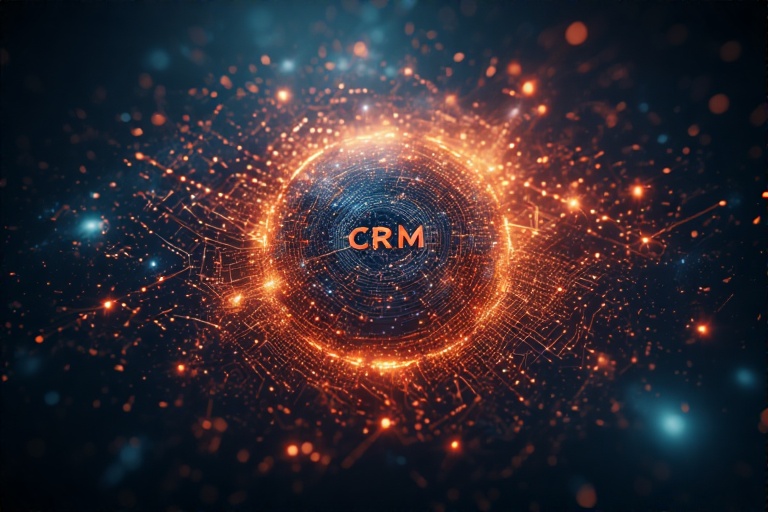In the digital age, data is more than just information—it’s fuel for decision-making, personalization, and growth. For businesses driven by customer relationships, the ability to collect, manage, and utilize customer data effectively defines success. That’s why Customer Data Management (CDM) in CRM business is no longer optional—it’s mission-critical.
This article dives deep into what Customer Data Management (CDM) is, why it matters in CRM (Customer Relationship Management) businesses, and how to build scalable, compliant, and intelligent data practices in your CRM ecosystem.
Let’s explore the foundational pillars, tools, best practices, and future-focused insights that make this article unique and SEO-optimized for Google’s algorithms.
Table of Contents
📌 What Is Customer Data Management in CRM Business?
Customer Data Management (CDM) refers to the strategic process of collecting, organizing, maintaining, and using customer data within a CRM platform to support sales, marketing, service, and decision-making.
✅ In a CRM business context, CDM enables a 360-degree view of customers by centralizing structured and unstructured data across all touchpoints.
CRM platforms like Salesforce, HubSpot, Microsoft Dynamics, or Zoho CRM serve as the operational core where all this customer data is stored, processed, and activated.
🔍 Why Customer Data Management Is Vital in CRM-Driven Organizations
💡 Key Benefits:
-
Improved customer experience via personalization
-
Data-driven marketing and sales strategies
-
Higher operational efficiency through automation
-
Stronger compliance with global data protection laws
-
Accurate reporting and forecasting
Poor CDM can lead to:
-
Duplicate contacts
-
Incomplete records
-
Inconsistent segmentation
-
GDPR/CCPA violations
-
Decreased user trust and engagement
🧩 Types of Customer Data in CRM Systems
Managing data in a CRM involves handling diverse datasets:
| Data Type | Description | Example Fields |
|---|---|---|
| Identity Data | Who the customer is | Name, email, phone, address |
| Descriptive Data | Additional attributes and traits | Age, job title, company size |
| Behavioral Data | How the customer interacts | Email clicks, website visits, purchase logs |
| Transactional Data | Purchase history and support tickets | Order ID, product purchased, refund status |
| Engagement Data | Communication history | Calls, emails, chat transcripts |
🧠 Core Pillars of Customer Data Management in CRM
✅ 1. Data Collection
Ensure accurate, complete data entry at all customer touchpoints:
-
Website forms
-
Email capture
-
Social media integrations
-
Offline data import (e.g., trade shows, retail)
Best Practices:
-
Use mandatory fields for key information
-
Integrate CRM with lead capture tools
-
Apply real-time validation to reduce errors
✅ 2. Data Standardization
Format consistency is critical. Example:
-
Phone numbers: (123) 456-7890 vs 123-456-7890
-
Names: ALL CAPS vs Title Case
Tools:
-
CRM rules & automation
-
Data cleansing plugins (e.g., Insycle, RingLead)
Goal: Ensure clean, searchable, and standardized records for segmentation and personalization.
✅ 3. Data Deduplication
Duplicate records hurt campaign accuracy, sales follow-ups, and reporting.
Deduplication Strategies:
-
Automated merge rules
-
Email or phone number as unique identifier
-
Regular audits or bulk cleanup tools
Pro Tip: Set automated CRM workflows to prevent duplicates on entry.
✅ 4. Data Enrichment
Enhance customer profiles using third-party sources or AI-driven tools:
-
LinkedIn integrations
-
Clearbit, ZoomInfo, or Lusha for B2B enrichment
-
Progressive form fields on websites
Benefits:
-
Deeper segmentation
-
Better lead scoring
-
Personalized marketing
✅ 5. Data Access and Security
Limit access based on roles to ensure compliance and minimize risk.
Best Practices:
-
Role-based access control (RBAC)
-
Data encryption at rest and in transit
-
Two-factor authentication (2FA)
Tools:
-
CRM security modules (e.g., Salesforce Shield)
-
SSO + audit trails
✅ 6. Data Compliance & Governance
Stay compliant with evolving data privacy laws:
-
GDPR (Europe)
-
CCPA (California)
-
AI Act (EU upcoming)
Checklist:
-
Consent tracking
-
Opt-out/unsubscribe handling
-
Right to be forgotten workflows
-
Data retention policy in CRM
✅ 7. Data Segmentation
Good data = great segmentation = better personalization.
Segment based on:
-
Lifecycle stage (lead, MQL, SQL, customer)
-
Behavior (opened emails, clicked ads)
-
Firmographics (industry, revenue)
-
Engagement score
Use dynamic lists and automation to keep segments current.
✅ 8. Data Activation & Reporting
Once your data is clean and segmented, activate it via:
-
Campaign triggers
-
Chatbot personalization
-
Dynamic email content
-
Predictive recommendations
And analyze it via:
-
Sales reports
-
Marketing attribution models
-
Lifetime value dashboards
🛠️ Best CRM Tools for Customer Data Management (2025)
| CRM Tool | Notable CDM Features |
|---|---|
| Salesforce | Data Cloud, Duplicate Management, Shield, Flow Builder |
| HubSpot CRM | Custom properties, segmentation, GDPR tools |
| Zoho CRM | Zia AI, workflows, field-level security |
| Microsoft Dynamics | Power Platform, AI-driven insights |
| Pipedrive | Simple UI, field merge, bulk update tools |
Choose the one that matches your business size, data volume, and growth strategy.
📉 Common Customer Data Management Mistakes to Avoid
| Mistake | Consequence | Fix |
|---|---|---|
| Collecting too much data | Analysis paralysis, friction | Focus on actionable, strategic fields |
| No validation rules | Inconsistent data | Use CRM form logic and regex patterns |
| Manual data entry | Human errors | Automate collection wherever possible |
| Lack of data ownership | Confusion, poor accountability | Assign CRM admins and data stewards |
| Ignoring compliance | Fines, lost trust | Automate opt-ins, audit logs, data exports |
💬 Real-World Use Case: Smart CDM = Smart Revenue
Company: BrightCore Tech (B2B SaaS company)
Challenge: Poor conversion due to fragmented lead data and inconsistent sales follow-ups
Solution:
-
Implemented HubSpot CRM
-
Set rules for deduplication and validation
-
Enriched leads using Clearbit
-
Segmented accounts by industry and ARR
-
Personalized outreach based on firmographics
Results:
-
40% increase in sales-qualified leads
-
25% improvement in campaign open rates
-
18% faster deal cycle
🔮 Future Trends in Customer Data Management (2025–2030)
🔹 AI-Powered Data Cleanup
-
Auto-detect anomalies
-
Predict missing values
-
Suggest segmentation logic
🔹 Real-Time Data Sync
-
Bi-directional sync with tools like Slack, LinkedIn, WhatsApp
🔹 Ethical AI Governance
-
Explainable segmentation and recommendations
-
Customer control panels for consent and preferences
🔹 CDP + CRM Integration
-
Unified customer data from web, app, ads, CRM in one layer
-
Used for hyper-personalized real-time customer experiences
✅ Conclusion: Customer Data Management Is the Lifeblood of CRM Business
To win in 2025, businesses must stop treating CRM as just a contact database. The real power lies in how data is managed, enriched, protected, and activated.
A successful CRM business doesn’t just collect customer data—it turns it into meaningful action.
By following robust Customer Data Management practices, you’ll unlock:
-
Faster sales
-
Higher retention
-
Personalized marketing
-
Smarter service
-
Stronger compliance
-
And ultimately, exponential business growth




